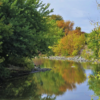Cracking the Code of Wausau Weather: Your Comprehensive Guide
Wausau, nestled in the heart of Wisconsin, is a city known for its picturesque landscapes, outdoor recreational opportunities, and friendly community. Whether you’re a resident or planning a visit to this charming city, understanding Wausau weather is essential for making the most of your time here. In this article, we will explore the intricacies of Wausau’s weather, providing you with valuable insights to help you navigate its climate effectively.
Wausau’s Climate Overview
To fully appreciate Wausau weather, it’s crucial to comprehend the city’s climate. Wausau experiences a humid continental climate, characterized by four distinct seasons: spring, summer, fall, and winter. These seasons each bring unique weather conditions that shape life in Wausau.
Seasonal Changes in Wausau Weather
Wausau Weather in Spring
Spring, from March to May, marks the transition from winter’s chill to the warmth of summer. As temperatures rise, snow melts, and the city comes to life with blooming flowers and budding trees. Spring is an ideal time for outdoor enthusiasts, with opportunities for hiking, biking, and exploring the rejuvenated landscapes.

Wausau Weather in Summer
Summer in Wausau, extending from June to August, brings warm to hot temperatures and longer daylight hours. It’s the peak season for outdoor recreation, with activities such as camping, fishing, and water sports in full swing. The city’s parks and natural areas shine during this time.
Wausau Weather in Fall
Fall, from September to November, transforms Wausau with stunning foliage. Crisp air and comfortable temperatures make it a favorite season for many residents and visitors. Fall is perfect for sightseeing, apple picking, and enjoying local festivals. The changing colors of the leaves create a captivating backdrop.
Wausau Weather in Winter
Winter in Wausau, from December to February, ushers in cooler temperatures and snowy landscapes. Snowfall is common during this season, creating opportunities for winter sports like skiing, snowmobiling, and ice skating. Indoor activities, such as cozying up by the fireplace and enjoying seasonal events, are also popular.
Average Wausau Weather Conditions
Wausau Temperatures
Wausau experiences a wide range of temperatures throughout the year. Average high temperatures range from 24°F (-4°C) in January to 82°F (28°C) in July. Low temperatures vary from 4°F (-16°C) in January to 59°F (15°C) in July, highlighting the distinctiveness of each season.
Wausau Precipitation
Precipitation patterns in Wausau vary by season. Summers tend to be wetter, while the city receives more snowfall during the winter months. The transition seasons of spring and fall bring moderate rainfall.
Wausau Humidity
Humidity levels in Wausau are relatively moderate year-round, typically ranging from 40% to 80%. Summers can feel more humid, while the winter months are drier.

Planning Your Activities According to Wausau Weather
Understanding the nuances of Wausau weather is crucial for planning your activities. Whether you’re interested in summer adventures, fall foliage tours, winter sports, or springtime explorations, Wausau offers a range of experiences in every season.
Wausau weather plays a significant role in shaping the city’s character and the experiences it offers. Armed with this knowledge, you can make informed decisions when planning your visit or daily activities in this diverse and dynamic part of Wisconsin. So, whether you’re embracing the warmth of summer, the colors of fall, the coziness of winter, or the renewal of spring, Wausau welcomes you with open arms and a wide array of weather experiences year-round.


